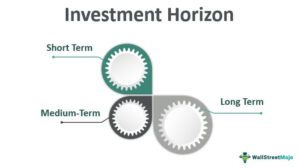1. Introduction
Investing is an essential tool for growing wealth and achieving financial goals. However, evaluating investment options can be a complex and overwhelming process. This guide will help you navigate the world of investments by providing a step-by-step approach to evaluate different investment opportunities effectively.
2. Setting Investment Goals
Before evaluating investment options, it’s crucial to define your investment goals. Determine the purpose of your investments, such as saving for retirement, funding education, or purchasing a home. Establishing clear goals will help you align your investment choices with your financial objectives.
3. Risk vs. Reward
All investments involve a certain degree of risk, and understanding the risk-reward tradeoff is essential. Higher-risk investments have the potential for higher returns but also carry a greater chance of loss. Assess your risk tolerance and choose investments that align with your comfort level.
4. Types of Investments
There are various investment options to consider, each with its characteristics and potential returns. Some common investment types include:
- Stocks: Investing in shares of publicly traded companies.
- Bonds: Purchasing debt securities issued by governments or corporations.
- Mutual Funds: Investing in a professionally managed portfolio of stocks, bonds, or other assets.
- Exchange-Traded Funds (ETFs): Similar to mutual funds but traded on stock exchanges.
- Real Estate: Investing in properties for rental income or appreciation.
- Commodities: Trading physical goods like gold, oil, or agricultural products.
- Cryptocurrencies: Investing in digital currencies like Bitcoin or Ethereum.

5. Investment Analysis
To make informed investment decisions, perform thorough investment analysis. This involves:
- Fundamental Analysis: Assessing the financial health and prospects of individual companies or assets by analyzing factors such as earnings, growth potential, and industry trends.
- Technical Analysis: Analyzing historical price patterns and market trends to predict future price movements.

6. Diversification
Diversification is key to managing investment risk. Spread your investments across different asset classes, industries, and geographic regions to reduce exposure to any single investment. Diversification can help mitigate losses and improve the overall stability of your portfolio.
7. Investment Horizon
Consider your investment horizon, which refers to the length of time you plan to hold your investments. Longer investment horizons provide more flexibility to weather short-term market fluctuations and pursue higher-risk, higher-return investments.
8. Assessing Investment Performance
Regularly evaluate the performance of your investments to ensure they align with your goals. Monitor key performance indicators such as returns, volatility, and benchmark comparisons. Consider using metrics like compound annual growth rate (CAGR) and standard deviation to assess investment performance.
9. Costs and Fees
Take into account the costs and fees associated with investments. Understand expense ratios, transaction fees, management fees, and other charges. Lower-cost investments can potentially enhance your overall returns over the long term.
10. Tax Implications
Evaluate the tax implications of your investments. Different investments may have varying tax treatments, such as capital gains taxes or dividend taxes. Consider tax-efficient investment strategies to minimize your tax liability and maximize after-tax returns.
11. Investment Advisor or Self-Investment
Decide whether to seek the guidance of a professional investment advisor or manage your investments independently. A financial advisor can provide expertise and personalized advice, but it comes with associated costs. Alternatively, self-investment requires thorough research and ongoing monitoring.
12. Making Informed Investment Decisions
To make informed investment decisions:
- Stay informed about financial news and market trends.
- Research and analyze potential investments thoroughly.
- Review historical performance and consider future growth prospects.
- Take a long-term perspective and avoid making impulsive decisions based on short-term market fluctuations.
- Regularly rebalance your portfolio to maintain your desired asset allocation.
13. Conclusion
Evaluating investment options is a critical step towards building a successful investment portfolio. By setting clear goals, understanding risk, conducting thorough analysis, and diversifying your investments, you can make informed decisions that align with your financial objectives. Remember to review and adjust your investment strategy periodically to adapt to changing market conditions.
14. FAQs
Q: How much should I invest? A: The amount you invest depends on your financial situation, goals, and risk tolerance. Start with an amount you’re comfortable with and gradually increase your investments over time.
Q: What is the difference between stocks and bonds? A: Stocks represent ownership in a company, while bonds are debt securities issued by governments or corporations. Stocks offer the potential for higher returns but come with greater risk, while bonds provide fixed income but lower growth potential.
Q: Are past investment returns indicative of future performance? A: Past performance does not guarantee future results. While historical data can provide insights, it’s important to consider other factors and conduct thorough analysis.
Evaluating investment options requires careful consideration and analysis. By following a systematic approach, understanding the risk-reward tradeoff, and aligning your investments with your goals, you can make informed decisions that contribute to long-term financial success.




